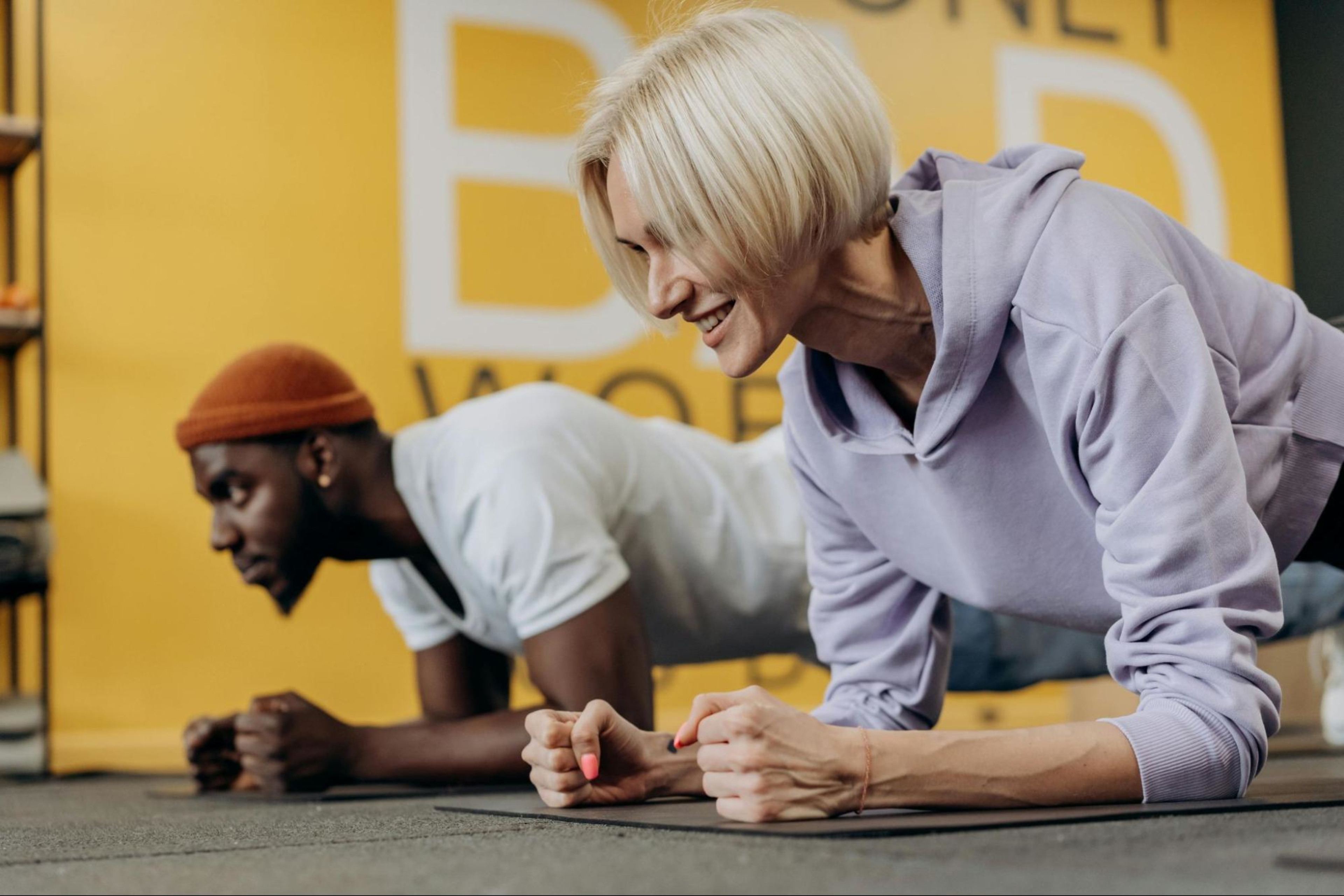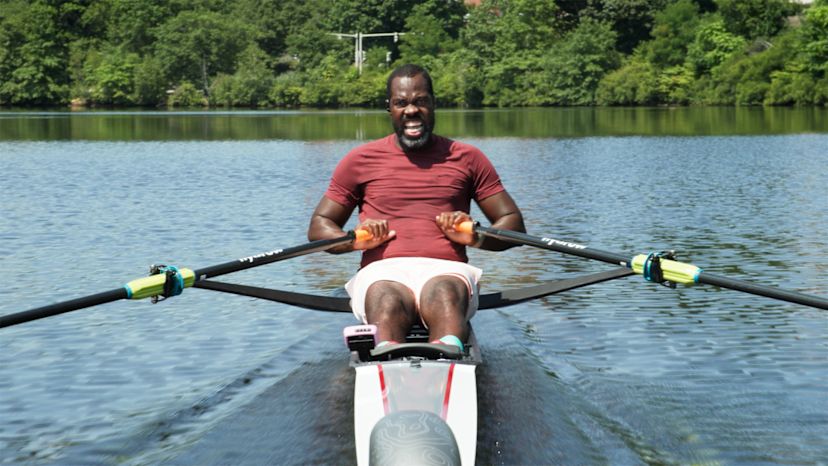How to Do a Plank: A Step-by-Step Guide to Perfect Form and Core Strength
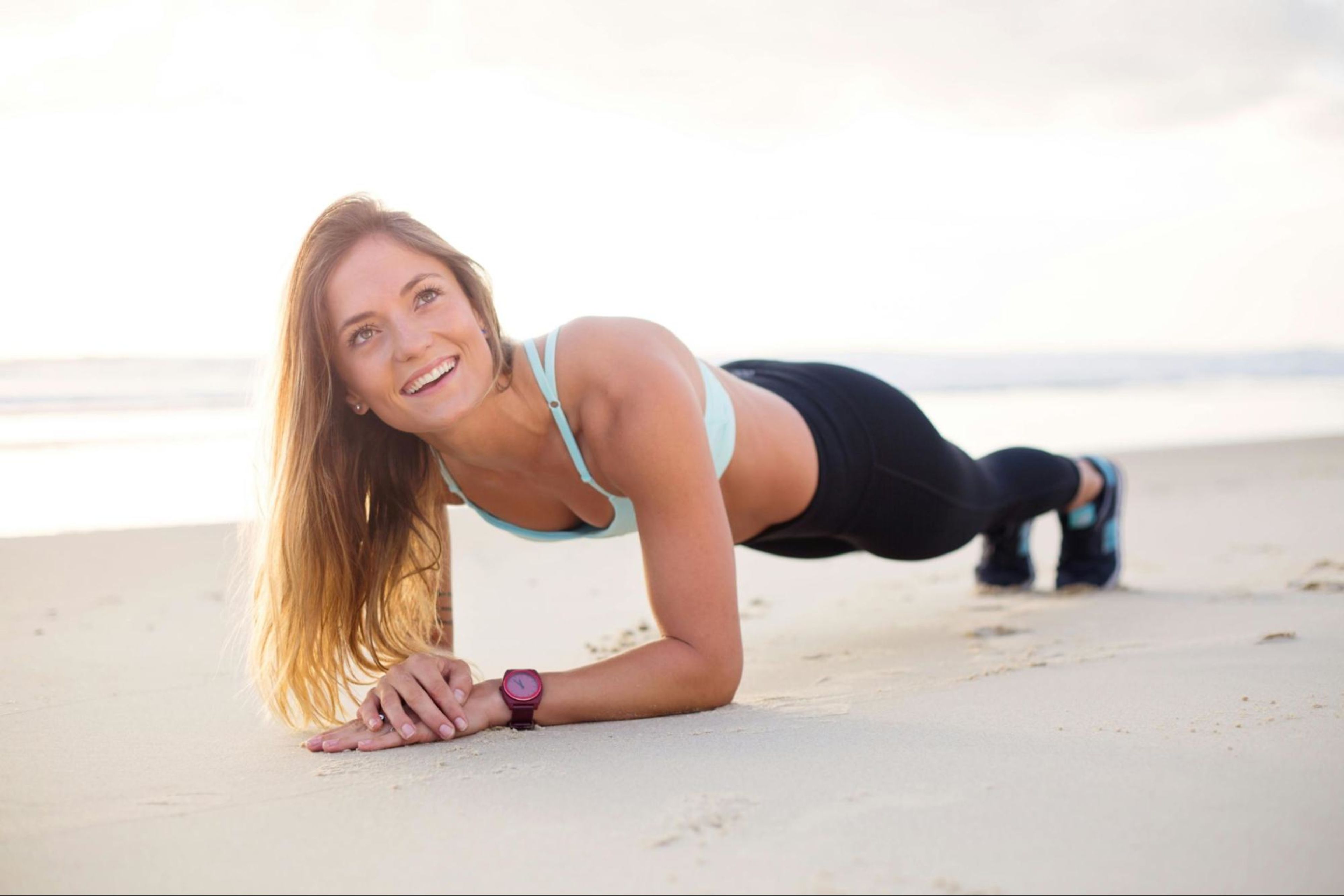
The plank is one of the best exercises for building core strength—and for disrupting the space-time continuum by making 10 seconds feel like 10 minutes. This simple movement that can sometimes feel like a cruel form of torture is a fantastic way to improve your strength and stability in an equipment-free, full-body workout.
While planks may seem like an easy exercise, proper form is crucial in order to reap the benefits and prevent injuries. This workout can also be modified for beginners or experts alike, making it a great exercise to incorporate into your fitness routine no matter where you are in your journey.
In this blog, we’ll cover everything you need to know about planks, including:
Let’s walk the plank!
What is a plank?
A plank is a static exercise in which you support your entire body by your forearms and toes while holding your torso in a straight line. While in a plank position, you’ll engage your core while maintaining proper alignment.
Planks can be held for a few seconds to several minutes (if you’re feeling brave!) and are a great way to challenge your endurance, as well as your physical and mental strength.
The benefits of planks
No matter your expertise level, planks offer a host of benefits. Primarily, they engage your core, improving your core muscles and obliques. Additionally, by challenging your core muscles, you can improve your stability and balance, as your core is the anchor of your body and controls these abilities and your coordination.
An unsuspecting benefit of the plank is better posture. Since planks strengthen your core, they can also lead to better support of your spine and reduce back pain.
Finally, planks challenge your overall fitness endurance by engaging a variety of muscles across your body all at once. As you increase the duration and complexity of your planks, you can continue to challenge your muscles and improve your endurance over time.
How to do a plank: A step-by-step guide
If you’re ready to give planks a try, it’s a good idea to understand what proper plank form looks like so you can experience all the rewarding benefits while preventing injuries.
1. Starting position
Start your plank by kneeling on the floor, preferably on a padded surface. Place your forearms directly beneath your shoulders with your elbows at a 90-degree angle. Stretch your legs out behind you and support your body weight by lifting your stomach and balancing between your forearms and your toes. Keep your legs hip-width apart and engage your core.
2. Maintain alignment and form
It’s important to keep your body in a straight line, including your head, shoulders, hips, and feet. Don’t let your hips sag or raise them too high. Imagine a thread is attached to your toes and is pulling straight through your body and out of your head to help keep proper form. Draw the belly button in towards the spine so that your navel pushes toward the small of your back. Remember to keep your shoulders directly above your elbows to minimize strain on your joints.
3. Breathing technique
Hold your plank, not your breath! Inhale through your nose and exhale through your mouth in regular intervals to maintain focus and endurance, all while maintaining an engaged core.
4. Duration
If you’re just trying a plank, it’s a good idea to start with shorter increments and multiple sets. Beginning with 10 to 30 seconds will help you to build your stamina. Over time, you can extend your duration to one- to two-minute increments. Remember that quality is better than quantity, so if you notice yourself losing proper form, it’s best to rest and then do another set.
Common mistakes to avoid when doing a plank
As we’ve emphasized, proper plank form is essential in order to reap the benefits and ward off injuries. This mindset should be applied to all exercises, but planks in particular require good form as they engage your full body. While in a plank, you’ll want to avoid the following:
Sagging hips
Arching lower back
Lifting or dropping your head
Overexertion
1. Sagging hips
Allowing your hips to sag while in a plank will put unnecessary strain on your lower back. To correct your form, tighten your core and your glutes, and focus on keeping your body in a straight line.
2. Arching lower back
Arching your lower back is another common tendency that can also cause back pain. In order to avoid this outcome, engage your core and squeeze your glutes with your pelvis tucked.

Explore Hydrow’s library of 5,000+ rowing, circuit training, yoga, Pilates, and mobility workouts.
3. Lifting or dropping your head
While you’re planking, keep your head neutral, aligned with your spine. Lifting your head will cause neck strain and dropping it leads to poor posture. Look slightly ahead or down to maintain alignment.
4. Overexertion
While increasing your endurance should be one of your goals, don’t overexert yourself too much, as it can lead to injury. As soon as it feels impossible to maintain proper form, end your plank. Take breaks as needed and then reset to the proper position.
Plank progressions and variations to try
If you’ve mastered the basic plank and want to intensify this exercise, there are a number of variations you can try. Alternatively, beginners can modify their planks to be easier as they work their way up to basic form. Check out the following:
Side plank
Plank with leg lift
Plank on exercise ball
Knee plank
1. Side plank
A side plank is a variation in which your body starts in a basic plank before you rotate one side of your body toward the ceiling so you’re perpendicular to the ground. To try it, start in a basic plank and then balance on just one forearm or hand and turn the other side of your body to the side with your arm reaching toward the ceiling. Alternate sides to challenge your full body. This variation is excellent for strengthening your obliques and your lateral core stability.
2. Plank with leg lift
Another way to increase the intensity of the basic plank is to start out with proper form and then alternate lifting one leg a few inches off the ground, maintaining your straight alignment while holding onto your core. Hold each leg lift for a few seconds and then alternate by lifting the other leg.
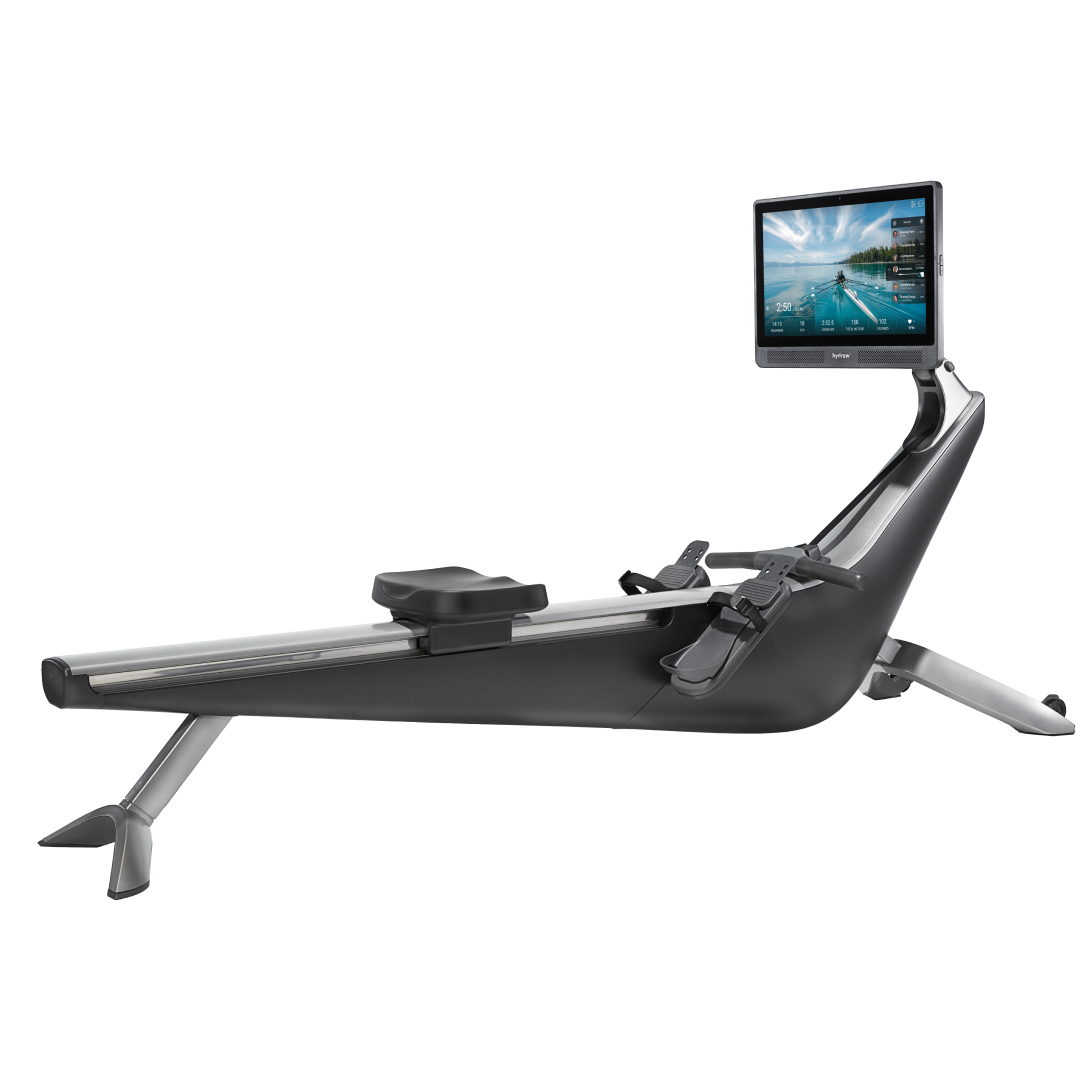
Cardio and strength, combined
Burn calories and build muscle with steady, natural movements.
3. Plank on exercise ball
Incorporate an exercise ball into your planks by placing either your forearms or your shins on the ball to challenge your balance. Perform your standard plank form and keep your body in an inverted straight line, depending on which end is lifted. This variation will force your core to work harder to maintain balance. Be sure your workspace is clear before starting, as getting onto the exercise ball may take a few tries.
4. Knee plank
A knee plank is an excellent modification for those who might find a basic plank to be uncomfortable or too challenging. For this version, follow the directions for a basic forearm or hand plank, but allow your knees to remain in contact with the floor. This will help to reduce strain on your back and core. Be sure to keep your back flat and your head in a neutral-spine position.
Tips for incorporating planks into your fitness routine
To yield the best results, it’s a good idea to incorporate planks into your routine three to four times per week with your other core workouts. If you experience soreness in your stomach, that means the planks are working! You may want to give yourself a rest day from planks every other day to allow your body to recover.
Planks pair well with other core-strengthening exercises. Consider pairing them with crunches, mountain climbers, or bicycle kicks. Combining these workouts will produce a stronger, more well-rounded core.
Ready, set, plank!
Planks are a powerful exercise for strengthening your core, improving your posture, and building endurance. By focusing on proper form, you can maximize the benefits of planks throughout your fitness journey. Whether you’re new to core-strengthening exercises or a seasoned athlete, planks are accessible and scalable, so they’re a great addition to your fitness routine. Enjoy building your endurance over time and track your results to celebrate your strides.
Looking for more guidance? Hydrow's strength training workouts offers guided sessions for every fitness level, all led by elite Athletes who coach you through each movement and help you stay consistent. Beyond our strength classes, our rowing workouts work 86% of your muscles (including your core) with every stroke. That's full-body training with real results.
Explore Hydrow’s strength workouts and see how far you can go.
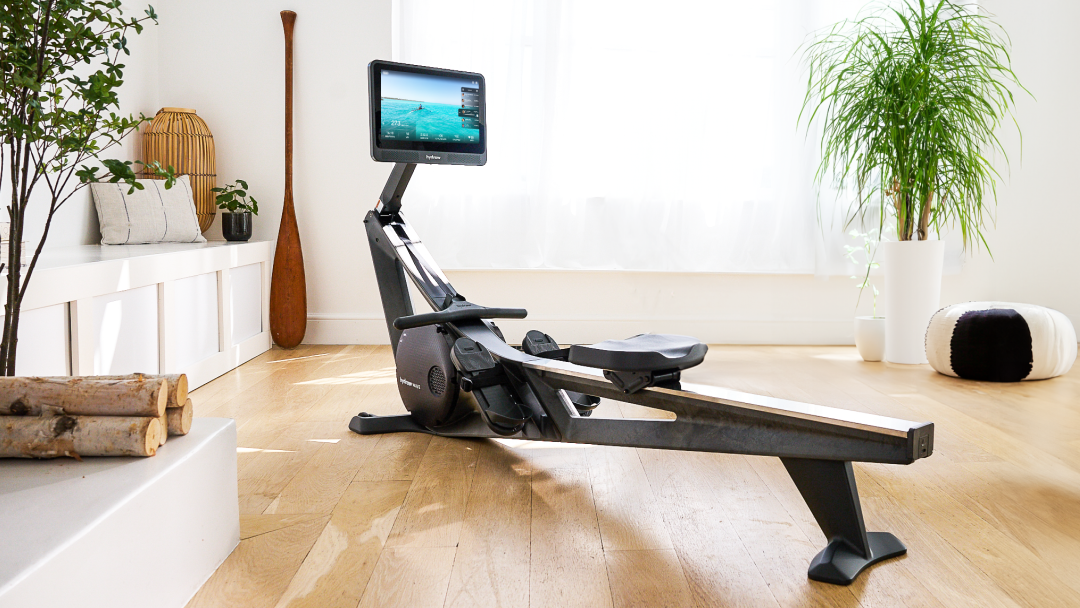
Real strength keeps moving
Learn how working out with Hydrow can help support a fuller, more active life.



